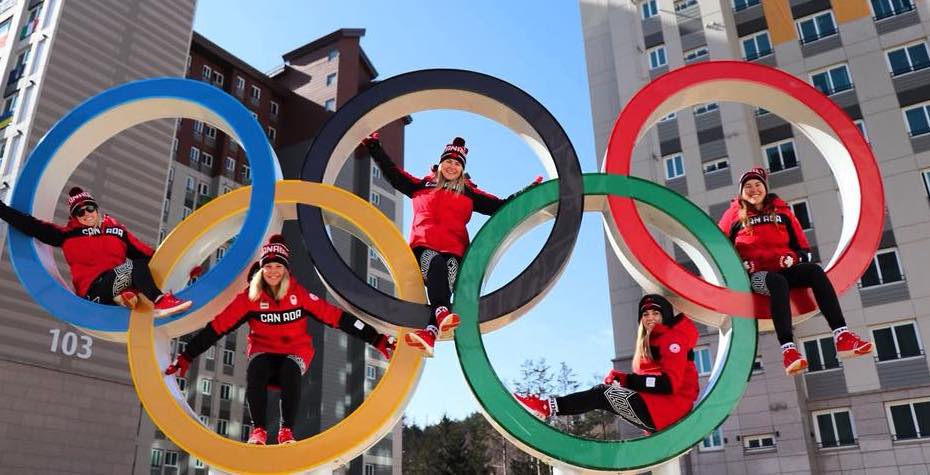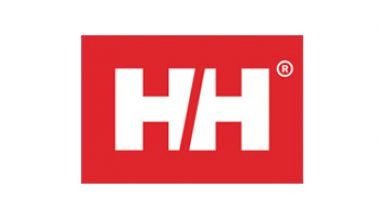Athletic Character
In training and competition, skiers are asked to push their physical limits of endurance, power, speed, and strength. Similarly, the mind is challenged to overcome mental and physical barriers by using focus, composure, and determination. Alpine Canada believes in building the whole skier for the long term. To be a top performer in ski racing, a skier should strive to develop their athletic character and athletic intelligence. The development of athletic character and athletic intelligence occurs throughout skiers career. The difference between a good ski racer and a great ski racer is their mindset and mental approach to training and competition.

Mental Fitness Overview
Being mentally fit allows a skier to optimally regulate thoughts, feelings, and behaviours while consistently maintaining a sense of purpose and coping with the many demands of training and racing. Being mentally fit allows a skier to maximize performance, engage in quality training, and maintain a healthy level of psychological well-being.
Developing mental fitness typically involves four steps
- Education
- Awareness
- Implementation
- Evaluation
Alpine Canada's Athletic Character Assessment is meant to score skiers using a multifaceted assessment of three main categories, including behaviour, mental preparation, and toughness and grit. The evaluation of athletic character provides both the athletes and coaches with a systematic method to identify strengths and weaknesses, create a psychological plan, and measure the plan through consistent feedback.
Attributes of a mentally fit skier measured by Alpine Canada
- Willingness to accept responsibility in sport and life.
- Confidence in their approach to sport and life.
- Professional in both sport and life.
- A student of the sport.
- A team player and supportive teammate.
- Emotionally intelligent in sport and life.
- Has the ability to perform on demand.
- Willingness to challenge their comfort zone.
- Ski racer has and uses a psychological plan.
- Skier is passionate, has grit and is mentally tough.
- Skier works hard consistently in sport and life to attain short and long-term goals.
- Skier approaches life and sport with a growth mindset.
Athletic Character by Stage
Through all of the LTAD stages, athletes can develop different mental skills and attributes, including what they say to themselves, how they see themselves, what they feel about themselves, and their demeanour. We have identified age-appropriate mental skills that can be developed in during each stage of a skiers development. Click on any of the LTAD stages listed below to discover more about age-appropriate mental skills training.
Behavioural Attributes
Accepts Responsibility
A skier holds themselves accountable against their performance. They do not make excuses, blame coaches or conditions. The skier is performance focused and holds themselves to the highest standards.
The ski racer:
- Is realistic and honest in reflection and communications.
- Identifies accomplishments and failures appropriately.
- Engages in regular and systematic performance debriefings.
Confidence
A ski racer consistently behaves confidently on and off the hill. The ski racer positively reacts to adversity. Alpine Canada believes in creating confident skiers on and off the ski hill.
The ski racer:
- Shows goal-orientation, motivation, and passion for skiing and sports.
- Displays a positive attitude and body language.
- Focuses on growth, opportunity, and learning.
Professionalism
The ski racer behaves professionally and strives to maximize their performance, as well as the performance of their team. The skier is fully prepared to optimize their performance at all training sessions and competitions. They are a role model for other skiers in their training group and team. They are a team player.
The ski racer:
- Displays good self-care in sport and life.
- Displays consistent proper preparation & time-management on and off the hill, before training and competition.
- Contributes and adheres to expectations of the team.
- Encourages and supports teammates, is receptive to theirs.
- Behaves respectful and tactful, also during times of conflict.
- Displays good sportsmanship.
Student of the Sport
The ski racer seeks to understand all aspects of ski racing, including technique, physical and mental preparation, equipment, etc.. They seek out knowledge and ask the right questions.
The ski racer:
- Displays interest and initiative.
- Keeps track of performance variables through the use of a journal or athlete monitoring.
- Is receptive to feedback and provides proper feedback.
- Can explain, share knowledge and take part in the learning process.
Emotional Intelligence
The ski racer can control emotions in a professional manner, including:- Ability to communicate under trying circumstances.
- Ability to build and strengthen relationships.
- React appropriately.
- Consistent behaviour trends.
Self-awareness: shows understanding of stressors and impact on own physical/emotional/mental responses to stress (or challenge, adversity).
Self-regulation: skier can manage stress responses adequately, minimize the impact of stress, is adaptive in trying situations.
Stays connected: with the coach, teammates, and others by investing in building, strengthening, and maintaining relationships.
Mental Preparation Attributes
Performance on Demand
A ski racer consistently performs to a high level, always to their ability. The ski racer embraces pressure situations and optimizes performances.
The ski racer:
- Executes consistent physical, technical, and mental preparation.
- Executes the training/race plan as prepared.
- Can perform in a 'big race' and well as in a 'normal' race.
Challenges Comfort Zone
Ski racers push themselves out of their comfort zone on and off the snow. The skier recognizes appropriate times to 'push-it.' The ski racer understands the concept of risk vs. reward and maximizes performance through controlled, yet aggressive strategies. The ski racer pushes themselves in the gym, and they are continually challenging themselves to be great.
The ski racer:
- Wants to be challenged, is resolute in accepting challenges.
- Displays perseverance through challenges.
- Allows for continuous engagement with challenges, understanding that 'being uncomfortable' is part of the job.
- Executes challenging tasks in a deliberate and controlled manner.
Psychological Plan
Ski racers have developed strong mental skills, either intuitively or through working with a performance psychologist.
Ski racers have specific plans in the following areas:
- Goal setting
- Distraction control strategies
- Visualization
- Coach-athlete relationship strategies
- Major event planning strategies
- Arousal control
Ski racers practice mental training regularly:
- By actively setting goals, both long-term and short-term, and reflecting on the attainment of their goals, use goals for deliberate practice.
- During race preparation (i.e., off-hill, course inspection, warm-up).
- Practices preferred/adaptive pre-race preparation routines.
- Is aware of and able to regulate towards 'individual zone of optimal functioning' including energy-focus-arousal control.
- Through completion of a performance debriefing to recognize learning opportunities.
Ski racers communicate effectively and timely with coaches and others.
Toughness/Grit Attributes
"We need to take our best ideas, our strongest intuitions, and we need to test them. We need to measure whether we've been successful, and we have to be willing to fail, to be wrong, to start over again with lessons learned." - Angela Lee Duckworth TED Talk Education
Mental Toughness (Heart)
Demonstrates resiliency through challenging times, committed to going the 'extra mile' and pushes through hard times. The ski racer accepts hard work as a challenge, not a burden.
- GRIT is the tendency to sustain interest in and efforts made toward very long-term goals.
- Resiliency is the ability to bounce back after a setback, failure, or adversity.
- Mental toughness is consistently being able to remain determined, focused, confident, and in control under pressure.
Athlete Effort (Willing to Prepare)
The ski racer demonstrates a strong work ethic and commitment to excellence in all areas of preparation, including the technical, physical, mental, and tactical domains.
- Works hard consistently in all areas, finishes tasks and activities.
- Recognizes that recovery is part of the effort.
- Shows effort for attaining short-term and long-term goals.
Growth Mindset (Learning from Failures)
Ski racer believes their talents can be developed through hard work, application of strategy, and are accepting of input from their coaches, parents, and others will increase the likelihood of long-term success in ski racing.
Coaches and parents who encourage safe and appropriate risk-taking, sometimes knowing the risk will not work out can promote the development of a growth mindset with proper feedback and encouragement.
Coaches and parents can encourage a growth mindset by assisting skiers with their reflection on the learning opportunity and rewarding safe risk-taking as part of the process of becoming a great skier and competitor. When the skier begins to understand that failure is part of the process of growth, it can help the skier learn how to capitalize on their setbacks to move forward in the process — resulting in the development of healthy, capable and resilient skiers who enjoy skiing leading in the promotion of individual athletic achievement.
"Praising the process that kids engage in, their effort, their strategies, their focus, their perseverance, their improvement. This process praise creates kids who are hardy and resilient.". - Carol S. Dweck TEDx Norrkoping
Athletic Intelligence - Decision Training for Skiers
Ski racing places a higher cognitive demand on the skier than a training session. The use of decision training to challenge the skier will develop their athletic intelligence allowing them to execute the proper technique and tactics on demand resulting in the achievement of excellence.
A training session is made up of physical, technical, tactical and mental elements. Through the research studies conducted by Dr. Joan N. Vickers at the University of Calgary and many other researchers in the area of motor learning and control, we are gaining more insight into training the decision-making processes with developing skiers. The incorporation of decision training can actively improve your skiers' athletic intelligence or their ability to intake, process, and react to the complex and rapidly changing cues involved in ski racing resulting in a seamless performance.
Decision training aids the skier in the development of the required decision-making skills needed to perform under pressure at the highest level. Skiers are more confident when their ability to think, understand, and respond during stressful competitions becomes automatic; resulting in the ability to perform on demand.
To accomplish this, skiers must have the opportunity to develop critical perceptual, attention, and problem-solving skills needed in competition during regular training sessions. Decision-making drills in ski racing include setting environments that present skiers with choices. Training to make the right decisions at increasing speeds through a variety of terrain environments will enhance the development of athletic intelligence as the skier matures. Snow Stars introduces some of these drills starting at the Skier Essential stage.
Effect use of decision training can lead to an increase in intrinsic motivation, independence, and goal setting by the skier, which involves them more fully into the training process and develops their athletic intelligence.
Seven Decision Training Tools
Dr. Joan N. Vickers has identified seven useful decision training tools a coach can use during training with their skiers. These tools can improve the long-term retention and transfer of critical physical and mental skills. Skiers will learn to automatically recall the core psychological and physical abilities they need in the competition.
Variable training
As opposed to repetitive or blocked simple to complex training, coaches can use variations that are realistic and developmentally appropriate. For example, avoid training repetitive symmetrical corridors. Instead set arrhythmical courses and safely change one or several gates often, without the skier’s knowledge between runs.
Random training
Use combinations of two to three skills during practice or an event to increase cognitive effort. An example of a random set is the "Kids Kombi Ski Cross" which combines giant slalom and super-g turn radii moving over terrain features in the course. Other examples of casual training include obstacle courses and the classical kids' kombi course with slalom and giant slalom turn radii.
Delayed feedback
Involves the coach intentionally reducing the amount of feedback they provide to the skier to encourage their skiers to solve problems on their own. Skiers should get used to not hearing comments from the coach every run but should be encouraged to ask coaches questions when needed to assist in finding a solution. Providing too much feedback can lead to coach dependency instead of the skier becoming confident in their decision-making abilities. An example is designing a developmentally appropriate training course just outside the challenge zone of the skier and then providing feedback only if the performance falls significantly outside the performance bandwidth of the skier.
Questioning
When feedback is reduced and delayed without a questioning strategy, a breakdown in communication will occur. Feedback should involve the skier in the process of designing the prescription to a lacking skill or performance. Instead of the coach always telling the skier what to do in the form of direct feedback, they ask questions that probe what the skier understands about the skill, tactic, drill or decision being trained. Questions also examine the skier's inner feelings; a critical kinesthetic dimension is often ignored in the “direct feedback” approach.
Questioning provides the opportunity for the skier to have input into their personal development allowing the skier to gain more knowledge about their sports performance and promote long-term retention of their improvement. The use of questioning can increase communication between the skier and coach during training and racing.
Video feedback and self-regulation
Videos allow the skier to view themselves to detect what they have done well and what needs to be improved. Once cued by the coach on what to look for, skiers should learn to analyze specific skills and tactics and respond to questions about their performance. Skiers should run their video sessions once they understand how to interpret their performance with their coach.
Hard first tactical instruction and modelling.
When “hard-first instruction” is used, complex thinking skills and concepts are introduced early in the training session. It is important to stress that the term “hard-first’ applies to thinking skills and ideas and not to hard-first physical skills or terrain, especially when young skiers are developing their fundamental skiing skills. For older, more developed skiers, the manipulation of speed and terrain can create a more challenging environment resulting in "hard-first instruction," challenging both physical and cognitive abilities.
The physical demands placed on your athletes should always be safe and developmentally appropriate and include the coaching of complex thinking skills required in competition. When complex thinking skills are presented at the beginning, skiers better understand the task and can handle the challenge.
Research shows that the use of "easy-first" instruction through the repetition of fundamental skills over and over results in low cognitive efforts and the underestimation of the cognitive efforts required to learn more advanced skills later in a skiers career. Easy first instruction leads to slower improvements and a mental state that is difficult to change later on.
The introduction of hard-first skills occurs through the use of a model such as viewing an expert video example, a demonstration on the snow by a coach or another skier who has mastered a skill. Hard-first instruction increases the amount of cognitive effort used, and this ensures longer-term retention that will be easier to recall in a competition or demanding training environment. Being able to watch demonstrations by a coach, another skier is a powerful “hard-first” learning tool due to the cognitive effort it takes to see and understand what is happening.
It is essential that skiers learn how to analyze the best skiers along with the lesser skilled skiers. Creating video loops of specific sections of a run that demonstrate particular skills or tactics performed by the best skiers can be a powerful modelling tool that has long-term beneficial effects. Skiers need to be comfortable with analyzing teammates and competitors’ performances and understand how to detect what is right and incorrect at all levels of performance. They should learn how to verbalize these differences in a technically mature and professional manner.
Using an external focus of instruction
Coaching instruction often draws attention to the internal requirements of the skill. Most statements made during feedback reflect on the control of technical skiing skills. This process creates an internal focus where the skier focuses on the body and its operations. Recent research shows the frequent use of internal focus cues results in a lower level of long-term performance than the use of external focus cues. When coaches use an external focus, the emphasis is on the goal of the task, specific objects, and locations in the environment. Using an external focus promotes the optimal use of the internal information processing systems resulting in a higher level of performance and skill acquisition.
An example of an external focus is to create a high edge angle by instructing the skier to show their ski bases to the sky instead of having the skier feel their ankle roll inwards.“Conscious attempts to control movements interfere with automatic motor control while focusing on external cues allow the motor system to self-organize more naturally unconstrained by conscious control.” (Wulf, Shea and Park 2001 p 342).
Resources:
REFERENCES:
Sport for Life Mental Fitness for LTAD
Alpine Canada Athletic Character Tracking Document
Alpine Canada Coach Education Athletic Character Webinar: Frank van den Berg, Director of Mental Performance for Calgary Sport Institute Calgary and Jennifer Stielow, Senior Coach Education Manager for Alpine Canada present an overview of the new Athletic Character assessment. The Athletic Character assessment is focused on developing positive mental fitness in both sport and life.
Angela Lee Duckworth: Grit: The power of passion and perseverance|TED Talk
Carol Dweck: The power of believing that you can improve| TEDxNorrkoping


